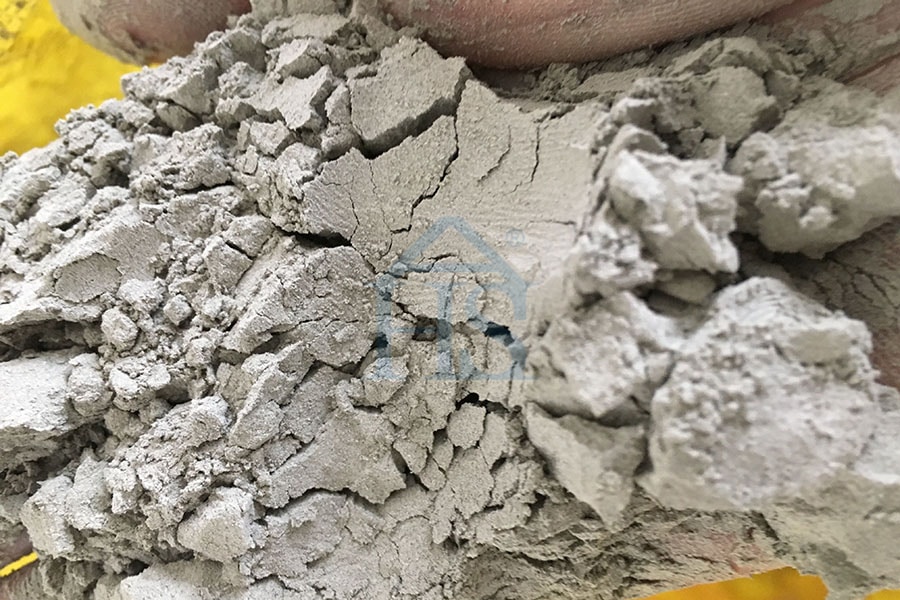Silica fume is a by-product of ferrosilicon smelting, which has an irreplaceable role in high-strength concrete, and at the same time, blending silica fume into autoclaved aerated concrete (AAC) can also improve its performance to a certain extent. Autoclaved aerated concrete is currently a more common wall concrete material, often choose to mix silica fume to improve its strength, but the impact of different amounts of silica fume on autoclaved aerated concrete is also different.
The effect of silica fume on the dry density
The dry density of autoclaved aerated concrete, with the increase in the amount of silica fume and the trend of reducing, experiments show that when not mixed with silica fume, the dry density of autoclaved aerated concrete is 527kg/m³, but when the amount of silica fume is 7%, its dry density is reduced to 516kg/m³, a reduction of 2.1%; the main reason for the reduction in dry density, is due to the density of silica fume itself (bulk density 338kg/m³) is much lower than the drying mortar (bulk density 900kg/m³), but because the overall amount of silica fume in autoclaved aerated concrete is not too large, so the decline in dry density has a relatively small impact.
The effect of silica fume on compressive strength
According to experimental and practical evidence, the compressive strength of autoclaved aerated concrete will increase with the amount of silica fume.
- The compressive strength of autoclaved aerated concrete is 3.1Mpa when silica fume is not mixed in;
- When silica fume is mixed with less than 5%, its compressive strength reaches 3.7Mpa, which is an obvious increase;
- When the silica fume admixture is 7%, its compressive strength increases to 3.8Mpa, an increase of 22.6%;
It can be seen that when the amount of silica fume is increased from 5% to 7%, the compressive strength of autoclaved aerated concrete increases from 3.7Mpa to 3.8Mpa, and the increase becomes slower, probably because after the amount of silica fume exceeds a certain value, the amount of silica fume not involved in the hydration reaction increases, and the improvement of strength is affected by the increase of its specific surface area, so it is recommended that the amount of silica fume is controlled at about 5% is more reasonable.
The effect of silica fume on hydration
The main physical phase of autoclaved aerated concrete is tobermorite, hydrated calcium silicate and unreacted quartz phase, of which tobermorite is the main gel material in autoclaved aerated concrete, which is formed by the reaction between calcium and silica materials under hydrothermal conditions, and its quantity and degree of crystallization directly determine the mechanical properties of autoclaved aerated concrete.
Experiments have proved that after the incorporation of silica fume, autoclaved aerated concrete hydration products gradually increased, when the amount of silica fume admixture of 5%, hydration products lap each other to form a mesh structure; at the same time, the hydration products after the incorporation of silica fume crystallized well, needle and rod-like and blade-like tropomorphite interwoven together, while a small amount of unreacted silica fume spherical particles filled with pore pieces.
Silica fume can improve the compressive strength of the reason
The reason why silica fume can improve the compressive strength of autoclaved aerated concrete is, on the one hand, due to the large specific surface area of silica fume and contains a large amount of active Si02; on the other hand, it is due to the microaggregate effect of silica fume
1. Silica fume has a large specific surface area
In the calcium silica hydrothermal reaction, the main factor governing the reaction is the dissolution and diffusion of Si02 because Ca(OH)2 has a larger solubility and dissolution rate than Si02, and the diffusion of Ca2+ is also faster than [Si04]2-. The amount of active Si02 in silica fume is much larger than that of finely ground river sand and fly ash, so the higher dissolution of Si02 and faster diffusion of [Si04]2- are conducive to the formation of more and well-crystallized tobermorillonite crystals.
2. Silica fume has microaggregate effect
The average particle size of silica fume is in 3 different orders of magnitude, which optimizes the micro-aggregate gradation and is conducive to close packing and filling; as the particle size of silica fume is in micron or even nano size, the unreacted spherical silica fume can also be filled between the hydration products, which makes the cementitious material have good gradation and increases the compactness of the hydration products from the microscopic scale, which in turn improves the compressive strength of autoclaved aerated concrete.
The above is the effect of silica fume on autoclaved aerated concrete, it should be noted that the above results, the content of SiO2 in the silica fume used is 93%, bulk density is 338kg/m³, specific surface area is 20.5m²/g, so we want to achieve the effect of improving the strength of concrete, there are certain requirements for the purchase standard of silica fume, Henan Youzhiyuan is engaged in the silica fume (micro silica powder) Henan Youzhiyuan is engaged in the production and supply of silica fume (micro silica powder) for many years, can provide users with different content of different uses of high quality silica fume products, such as the need to leave a message on our website, or call customer service for detailed consultation.





